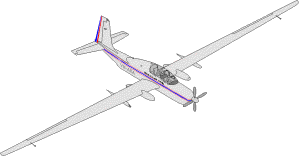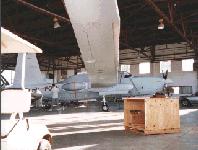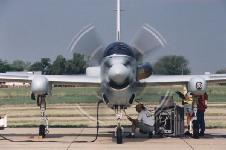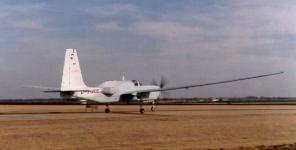FAS |
Military |
DOD 101 |
Systems |
Aircraft |
ROW ||||
Index |
Search |
Join FAS




Grob G520T Egrett
Senior Guardian
LAPAS (Airborne Stand-off Primary Reconnaissance System)
 The Egrett series of aircraft was originally developed by Grob Flugzeugbau GmbH & Co KG (Germany) and E-Systems Inc. (USA) as a low-cost (in military terms) high altitude reconnaissance platform for the German and US Air Forces. Egrett, a high-altitude long endurance manned aircraft made out of composites, is powered by a single turboprop engine, it has a wingspan similar to that of a commercial Boeing 737. The program was known as Senior Guardian in the United States, and as LAPAS (Airborne Stand-off Primary Reconnaissance System) in Germany.
Although the mission of the Senior Guardian project is publicly portrayed as focused environmental monitoring and treaty verification, a similar cover story was used during the early years of the U-2 program.
The Egrett series of aircraft was originally developed by Grob Flugzeugbau GmbH & Co KG (Germany) and E-Systems Inc. (USA) as a low-cost (in military terms) high altitude reconnaissance platform for the German and US Air Forces. Egrett, a high-altitude long endurance manned aircraft made out of composites, is powered by a single turboprop engine, it has a wingspan similar to that of a commercial Boeing 737. The program was known as Senior Guardian in the United States, and as LAPAS (Airborne Stand-off Primary Reconnaissance System) in Germany.
Although the mission of the Senior Guardian project is publicly portrayed as focused environmental monitoring and treaty verification, a similar cover story was used during the early years of the U-2 program.
A total of five airplanes were built, the single-seater Proof-of-Concept aircraft, three production single seaters and one two-seater trainer. After an evaluation period, the two Air Forces decided that the aircraft did not fit their requirements. Since then, some of the single seaters have been successfully used as ad-hoc high-altitude research platforms (for example by Aurora Corporation in the USA and by the Weltrauminstitut in Berlin).
The Egrett is capable of carrying about 750kg of payload to a maximum altitude of 50,000ft (15km) and stay there for around 8 hours, depending on the mission profile. Normal cruising speed (indicated air speed, IAS) at altitude is 130-150kts (65-75m/s) with a true air speed (TAS) of about Mach 0.45. Its maximum range at altitude is about 1500NM (2800km). The aircraft can operate from most sealed runways. No special airport infrastructure is required. It is powered by a single Garrett turboprop engine and is certified as a normal aircraft under Australian, German and US regulations for flight under all-weather conditions (IFR/icing). The normal crew consists of a pilot occupying the front seat and a systems operator/scientist occupying the rear seat. As the Egrett was originally designed as a reconnaissance aircraft, its modular fuselage structure offers ample and simple options for a large number of down- or sidewards looking apertures in the fuselage. The whole lower section of the forward fuselage is non-structural and modifications to this part are rather simple. Upwards looking apertures do not exist currently, but will be retro-fitted once required.Specifications | |
| Country of Origin | Germany |
| Builder | |
| Role | |
| Similar Aircraft | |
| Wing Span | |
| Length | |
| Height | |
| Weight | |
| Engine | 1 turbo-prop engine |
| Maximum speed | |
| Cruising speed | |
| Range | 2,500km - 8hrs |
| Service Ceiling | 6 - 15km |
| Payload | 800kg |
| Crew | |
| Cost | |
| User Countries | |




Sources and Resources


FAS |
Military |
DOD 101 |
Systems |
Aircraft |
ROW ||||
Index |
Search |
Join FAS
http://www.fas.org/man/dod-101/sys/ac/row/egrett.htm
Maintained by Robert Sherman
Originally created by John Pike
Updated Tuesday, September 21, 1999 10:18:15 AM